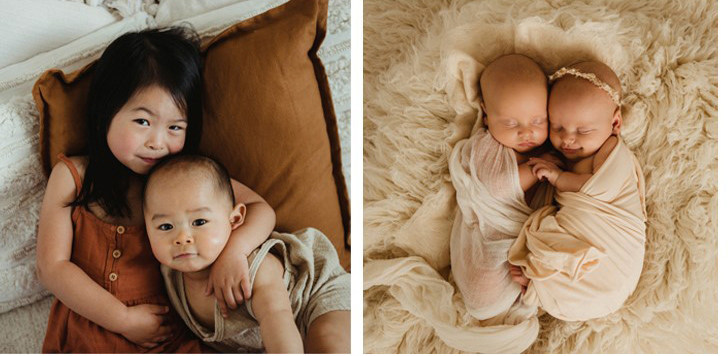The Road to women’s Suffrage in the Philippines By Ferdinand Philip V. Victoria
In October 2013, the World Economic Forum Global Gender Gap Report ranked the Philippines as the fifth most progressive nation in terms of women empowerment. This latest development is just one of the historical milestones regarding Filipino women’s rights and empowerment.
One of the modern seminal events was the triumph of the women’s suffrage movement in the April 30, 1937 plebiscite where an overwhelming 447,725 (91%) of women approved this right as opposed to 44,307 (or 9%).
The Philippines was the third Southeast Asian territory to grant its women citizens full suffrage (next to Burma-1922 and Thailand-1932) but was rather late considering that the women in the United States were granted suffrage in 1920. Election lawyer Romulo Macalintal points out that the view then was that women were regarded as “mere extension of the personality of their husbands and fathers, and that they were not fit to participate in the affairs of government.”
After much clamor Article V of the 1935 Constitution finally included a provision extending the “right of suffrage to women, if in a plebiscite which shall be held for that purpose within two years after the adoption of this Constitution, not less than three hundred thousand women possessing the necessary qualifications” would vote in its favor. The plebiscite-enabling law signed on September 30, 1936 known as Commonwealth Act No. 34 set the date to April 30th.
Women leaders such as Pilar Hidalgo-Lim, president of the National Federation of Women’s Clubs, Rosa Sevilla-Alvero and Josefa Escoda held conferences, mass meetings and house to house canvassing to persuade women to register and cast the handed ballots. When the registration precincts opened for the week-long registration on April 10, 1937, the Graphic reported that only 50,000 women in Manila and the 13 provinces turned up. The paper attributed this to the “fear of the possible imposition of the cedula taxes and the liberal divorce menace.” The leaders, however, noted the hesitance of some women to go to the precincts where there inspectors were males. Other complaints ranged from early opening and closing of precincts; lack of ballots and illegal requisition of birth and marriage certificates. However, the pace of the registration later picked up.
The first case of election-related violence was reported in Umingan, Pangasinan when election inspector “and ardent suffrage supporter” Julio San Juan was wounded when he was hacked by a bolo by Pedro Martin. San Juan was persuading Martin’s wife to register when a furious spat between the two males ensued and led to the assault.
As the April 17 deadline loomed, Leaders such as Pilar Hidalgo-Lim, president of the National Federation of Women’s Clubs, expressed confidence that the 581,000 registered women will vote Yes. Anti-suffrage critics ac-cused women activists of wheedling some inspectors to register voters and bringing the ballots to their homes than at the precincts. There was also concern of minor-aged voters being registered. One paper, The Philippine Common-wealth, reported that “Indig-nation among the common people especially over the anomalies alleged to have been committed by women to insure the success of the plebiscite is very intense.” Lim dismissed the charges as a distraction to the “unrelenting” victory. The Graphic reminded women to vote on April 30,, a declared legal holiday, so as not to hold “the very dubious honor of having withheld from their sex the right of suffrage.”
The triumph of women suffrage was lauded by the media. The Graphic editorialentitled “Now What?”, however, saw the challenge of the future role of women suffrage in changing Philippine society. While it may be “impertinent to ask just how the women will use their newly-acquired privilege…[it] must be asked because unless the women can make use of their right to vote in a manner better than the way the men make use of theirs, women suffrage …will be more of a catastrophe to the country than a blessing.”
Savoring the victory at the polls was short-lived. Within the next two weeks, issues such as whether women were ready for political office, to pay the poll tax (cedula) or to support the divorce bill emerged. Advocates such as Claro Recto, Geronima Pecson and Alvero believed that enfranchisement inferred the right to be voted into office. Interior Secretary Elpidio Quirino pointed out, however, that the existing election law must be amended since it only entitled males to hold elective posts. On the tax, Secretary Jorge Vargas and Finance Secretary Severino de las Alas favored imposing it as sharing the concomitant obligation of equality while Public Works Secretary Mariano Cuenco and the suffragettes opposed it because it was “unjust and humiliating.” The General Council of Women mainly argued that (1) the majority of the women are not wage earners; (2) women proprietors and professionals are already paying such taxes; and (3) that mothers “contri-bute their share toward the development and welfare of the country” by bearing and training children “to be honest, God-fearing citizens” even without paying any tax. The humor column of the Graphic allegedly quoted a conversation with a Plaridel, Bulacan leader that the cedula and divorce issues were those that did in the victory. When asked whether that meant paying the tax and supporting divorce, the leader replied, “Sira ba ang ulo mo? So we can fight the cedula and the divorce, that’s what.”







Leave a Reply